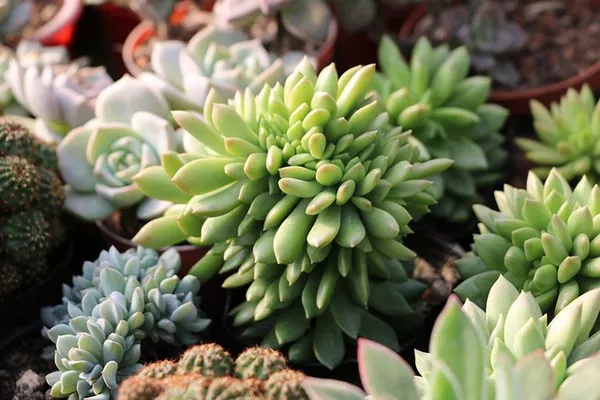Succulents have gained immense popularity in recent years, charming enthusiasts with their unique shapes and low-maintenance requirements. These hardy plants are well-known for their ability to store water in their fleshy leaves, making them the perfect choice for both novice and experienced gardeners. However, what many people may not realize is that succulent leaves have the remarkable potential to be regrown, turning a seemingly discarded leaf into a flourishing new plant. In this guide, we will delve into the art of regrowing succulent leaves, providing you with the insights and techniques to nurture new growth and cultivate beauty anew.
Understanding the Anatomy and Propagation Mechanisms
Before delving into the steps of regrowing succulent leaves, it’s crucial to grasp the basic anatomy and propagation mechanisms of these fascinating plants. Succulents have evolved to store water in their leaves, stems, and roots, allowing them to thrive in arid environments. This natural adaptation plays a pivotal role in their regrowth potential.
Propagation through leaf regeneration is a form of asexual reproduction. In the wild, this mechanism helps succulents adapt to changing conditions and colonize new areas. Each succulent leaf contains specialized cells that can develop into new roots and shoots under the right conditions. By replicating these conditions, gardeners can encourage the leaf to generate new growth, effectively creating a genetically identical clone of the parent plant.
Step-by-Step Guide to Regrowing Succulent Leaves
1. Leaf Selection
Begin by selecting a healthy leaf from the parent succulent. Choose a mature leaf that is plump and free from signs of damage or disease. Gently twist the leaf off the stem, ensuring that a clean break is achieved without tearing the leaf.
2. Callus Formation
Place the removed leaf in a dry, shaded area for a few days. This step allows the cut end of the leaf to callus over, preventing potential rot when it comes into contact with soil.
3. Soil Preparation
While the leaf is callusing, prepare a well-draining succulent mix. A combination of potting soil, perlite, and sand creates an ideal medium for root development. Fill a small pot or container with this mixture, leaving enough space for the leaf to be inserted without touching the sides.
4. Planting the Leaf
Once the leaf has developed a callus, gently press the cut end into the soil mix. Ensure that only a small portion of the leaf is buried, with the majority of it remaining above the soil line. Mist the soil lightly to settle it around the leaf.
5. Patience and Care
Place the potted leaf in a location with indirect sunlight. Avoid exposing it to direct sunlight, as this could lead to sunburn. Water the soil lightly, keeping it consistently moist but not waterlogged. Over time, the leaf will begin to show signs of new growth, usually in the form of tiny rosettes or buds.
6. Root and Shoot Development
As the leaf establishes roots and new shoots, continue to monitor its progress. Once the new growth has developed several leaves and is sturdy enough to handle, you can consider transplanting it into a larger container or directly into your garden.
7. Gradual Acclimatization
If you choose to transplant the new succulent outdoors, it’s crucial to acclimate it slowly to its new environment. Gradually expose the plant to increasing amounts of sunlight over the course of a week or two. This prevents the plant from undergoing shock due to sudden changes in light and temperature.
Tips for Success
Avoid Overwatering: Succulents are highly sensitive to overwatering, which can lead to rot. Water the soil sparingly and allow it to dry out between watering sessions.
Optimal Temperature Range: Succulents thrive in temperatures ranging from 60 to 80 degrees Fahrenheit (15 to 27 degrees Celsius). Avoid exposing them to extreme cold or heat.
Use a Well-Draining Container: Whether planting indoors or outdoors, ensure that the container has proper drainage holes to prevent waterlogging.
Select the Right Varieties: While most succulent species can be propagated from leaves, some are more challenging than others. As a beginner, consider starting with easier-to-propagate varieties.
Be Patient: Leaf propagation takes time. New growth will appear gradually, so exercise patience and refrain from disturbing the plant during this delicate stage.
The Beauty of Regrowth
Regrowing succulent leaves is a rewarding endeavor that allows you to witness the beauty of nature’s regenerative processes firsthand. With the right knowledge and care, you can transform a single leaf into a thriving succulent plant, enhancing your indoor or outdoor space with a touch of natural elegance. By understanding the anatomy, mechanisms, and techniques involved in succulent leaf regeneration, you embark on a journey of cultivation that celebrates the resilience and splendor of these remarkable plants.


